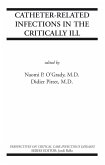For centuries the great minds of medical science puzzled over the importance of the cerebrospinal fluid. As far back as Hippocrates, it was thought that this "phlegm" that flooded the intracranial contents had pathological significance. However, not until the late 1800s, when Quincke introduced and popularized lumbar puncture, did physicians take an interest in the study of this fluid in relation to clinical illness. Since then a variety of techniques for obtaining cerebrospinal fluid from various sites have developed, and the relationship of cerebrospinal fluid to a variety of disease processes has received considerable study. In this volume, we have attempted to assemble reviews of some of these important developments during the past century. Chapter 1 contains a historical review of key investigations that helped shape our concepts of cerebrospinal fluid from the earliest recorded description by the author of the Edwin Smith Surgical Papyrus in the seventeenth century B. C. to contemporaries such as Kabat, Glusman, and Knaub, who introduced quantitative determinations of cerebrospinal fluid gamma globulin levels. In Chapter 2 there is a description of our current understanding of the anatomical compartment for the cerebrospinal fluid and the physiology of its formation, circulation, and absorption. Dr. Richard Leech in Chapter 3 contributes a comprehensive description of the disorders associated with excessive quanti ties of cerebrospinal fluid-commonly referred to as hydrocephalus. A variety of techniques for properly collecting and evaluating cerebrospinal fluid are detailed in Chapter 4.








